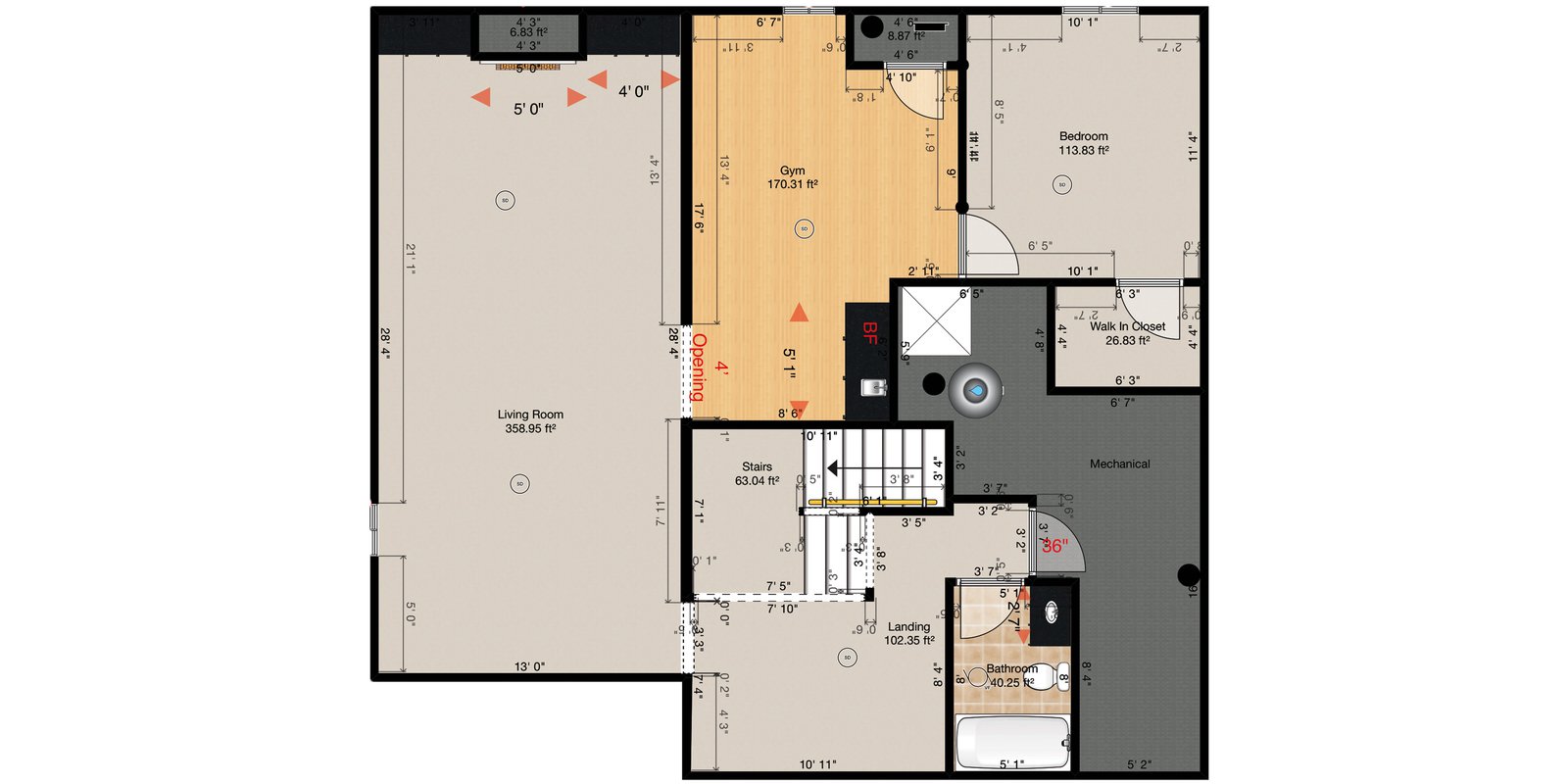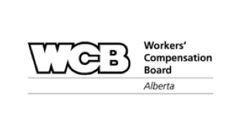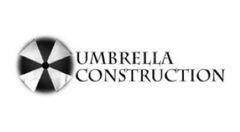You’ve finally taken the leap to complete your basement. Congratulations! We’re as excited for you as you are excited to get going on the process. Now, obviously, basement development is complex enough without us having to point it out, and you’re aware that this is a multi-week if not multi-month process. There are a lot of decisions to be made, a lot of time put into the process, and overall a lot of consideration to be done with budget. Budget can be one of the biggest stalemates when it comes to creating an amazing basement floor plan. Luckily, Basement Builders, as a renowned and reputable basement development company in Calgary, Airdrie, and the surrounding areas, can help you come up with a unique, affordable, and appealing idea.
Without further ado, let’s get into what makes a great basement floor plan, including basement flooring options and the features/factors that make up a decent basement floor plan. If you have any questions, don’t hesitate to reach out to us here at Basement Builders, a trusted and reputable basement development company.
Determine Efficient Usage
Basements are typically small and have close quarters, so it’s important to think about how you’ll make the most efficient use of the space. This will need some planning. Determine what you want to have in this space, whether that’s a home gym, an office space, where people will be walking through most commonly, whether you’re going to incorporate added rooms (like bathrooms, kitchenettes, or a guest suite) and create a functional layout based on that. Basement Builders excels at creating incredible, functional basement plans in even the smallest of spaces, so look to us if you need any help.
Determine Ceiling Height
An important consideration when it comes to developing a basement is the ceiling height. The ceiling height must comply with the residential measurement standard in Alberta, and it should also be comfortable! When you decide upon the height of your ceiling properly, remember to include all piping and ductwork that may run across and reduce your open space. If you have any utility lines in the basement that need to be covered by a drop ceiling, you’ll have to account for that extra space in your finalized height.
Take Storage into Consideration
Basement spaces are used for a lot of storage, even when they’re unfinished – and even if the primary usage for your basement is something else! You’ll want to ensure that the design you decide upon facilitates all your storage needs. Consider how much storage space the rest of your home has and figure out whether the basement will require any storage accommodations.
Account for Lighting
Because basements are below-grade (this means below ground level, not that they’re sub-par! Grade just means floors when we’re talking about construction) they do not receive as much natural daylight as other spaces in your home. The design you finalize on will have to account for how to properly leverage any natural lighting opportunities, such as through windows, outdoor landscaping, walkout, and more. You’ll likely also need to make room for artificial lighting in your design plan, especially in the form of individual light fixtures and recessed lighting. Basement ceiling heights tend to be on the lower side, so you may want to avoid any hanging fixtures where possible.
Basement Flooring Options
When it comes to your basement flooring, there are so many options. It depends on your budget and on what you’re going for in terms of “style” as to what will best benefit your final design. Note that basement flooring doesn’t exactly play by the same rules as flooring anywhere else in your home. Basement flooring can easily become a victim of residual moisture that reaches out in the form of vapor, thanks to its proximity to the ground. Water can also enter through your basement from heavy rains, nearby flooding, plumbing issues, etc.
So, in addition to appearance, you’ll have to also consider how your basement flooring will do with moisture. You’ll want to know how to best avoid moisture and how easily your floor will dry out if it ever becomes wet. Here’s a list of some of the best flooring options for basements, broken down into their various pros and cons.
Vinyl Flooring
Vinyl flooring, or resilient flooring, is one of the best basement flooring options – ranking in with concrete and ceramic tile. It can come in tile or plank form.
Pros: it can keep water at bay, it’s affordable, and it holds onto heat easier than concrete or ceramic.
Cons: it’s considered a “cheap fix,” is tough to install, and can be difficult to remove.
Engineered Wood Flooring
Most flooring options are made from wood, and therefore organic, which means they won’t hold up well to prolonged moisture. As such, solid hardwood is not a great idea for a below-grade flooring option. Engineered hardwood flooring, however, is much better.
Pros: can hold up well even with mild amounts of moisture, has great sound absorption, and is one of the most aesthetically appealing flooring options
Cons: has to be installed on a subfloor, is difficult to remove if there’s water damage, and it’s one of the more expensive flooring options.
Ceramic or Porcelain Flooring
Many people choose ceramic or porcelain tile flooring for good reason. It works as a finished surface and is attractive on its own, and yet requires no additional treatment in the way of concrete.
Pros: it can dry out easily if there’s flooding, doesn’t develop rot, and can be a DIY flooring project
Cons: it needs the addition of radiant heating in some climates, has poor sound absorption, and is very difficult to remove and/or replace.
Concrete Flooring
Concrete is becoming more widely accepted by homeowners, even if gives off the appearance of an unfinished basement. Concrete is not bound to its raw state and can be stained or painted to appear differently. Painting may be the best way to do any extensive patching as well.
Pros: Requires the least amount of materials, doesn’t need a subfloor, and is the most moisture-resistant flooring option around.
Cons: There’s no way to heat it from below, has poor sound quality, and requires much more labor than most flooring materials.
Wall-to-Wall Carpeting
Often vilified as being a poor flooring material due to its ability to quickly develop mildew and mold, wall-to-wall carpeting can work – with some creative alternatives. You can install carpet squares rather than wall-to-wall carpeting, so you can selectively pull up and replace each square if there’s damage.
Pros: one of the warmest basement flooring options, great sound quality, great for young children, and easy to remove if there’s ever water damage.
Cons: it can be expensive, and although it can dry, it can take industrial-quality drying equipment to get the job done before mold can form.
Rubber Flooring
Rubber flooring may seem most appropriate for gyms, garages, pools, and dance studios, but it can work in basements meant for play spaces and fitness centers. Otherwise, it’s not the best for most homes. Still, if this is what you want, it can be an excellent choice.
Pros: offers maximum insulation against subfloor basement temperatures, works well if there’s moisture, is soft to walk on.
Cons: not the best aesthetic match for most basement spaces (better for storage or exercising), and not completely waterproof since water can slip between the seams.
Laminate Flooring
Laminate flooring is gaining popularity as a more attractive flooring option. It has improved image layer graphics, deeper/thicker surfaces, but it’s more vulnerable to moisture issues than some flooring. Over time, it’s also known to degrade faster than some materials.
Pros: one of the warmest flooring options, easy DIY, and absorbs sound relatively well.
Cons: easily water damaged, can accumulate static electricity, hollow feeling, subfloor installation is highly recommended.
So, if you were wondering, “What is the best flooring for basements? For my basement?
know that the answer is largely dependent on what you’re going for, but don’t pass on the vinyl! You can also purchase luxury vinyl, but that’ll come at an increased cost.
What is the best flooring for basements?
Although it’s debatable, vinyl flooring reigns supreme for the number of homeowners who inevitably choose vinyl flooring and for its durability as a below-grade flooring material. Vinyl is great because you can purchase it both in the form of vinyl tile and vinyl plank, which allows it looks basically identical to stone products and hardwood – while also being waterproof and easy to install. Vinyl flooring is essentially made from PVC, which makes it durable and waterproof simultaneously.
Conclusion
Your basement should be unique to you. What you decide to include, how you do your design, and what basement flooring options you choose are your decision.
Basement Builders has over 15 years of experience operating in various cities in Alberta and has completed over 2,000+ projects in our service areas. We never leave a job until you’re 100% satisfied, and we’re more than happy to say that we excel at what we do because we’ve solely dedicated ourselves to basement development. Give us a call or get a quote to get started on your latest basement development project.









